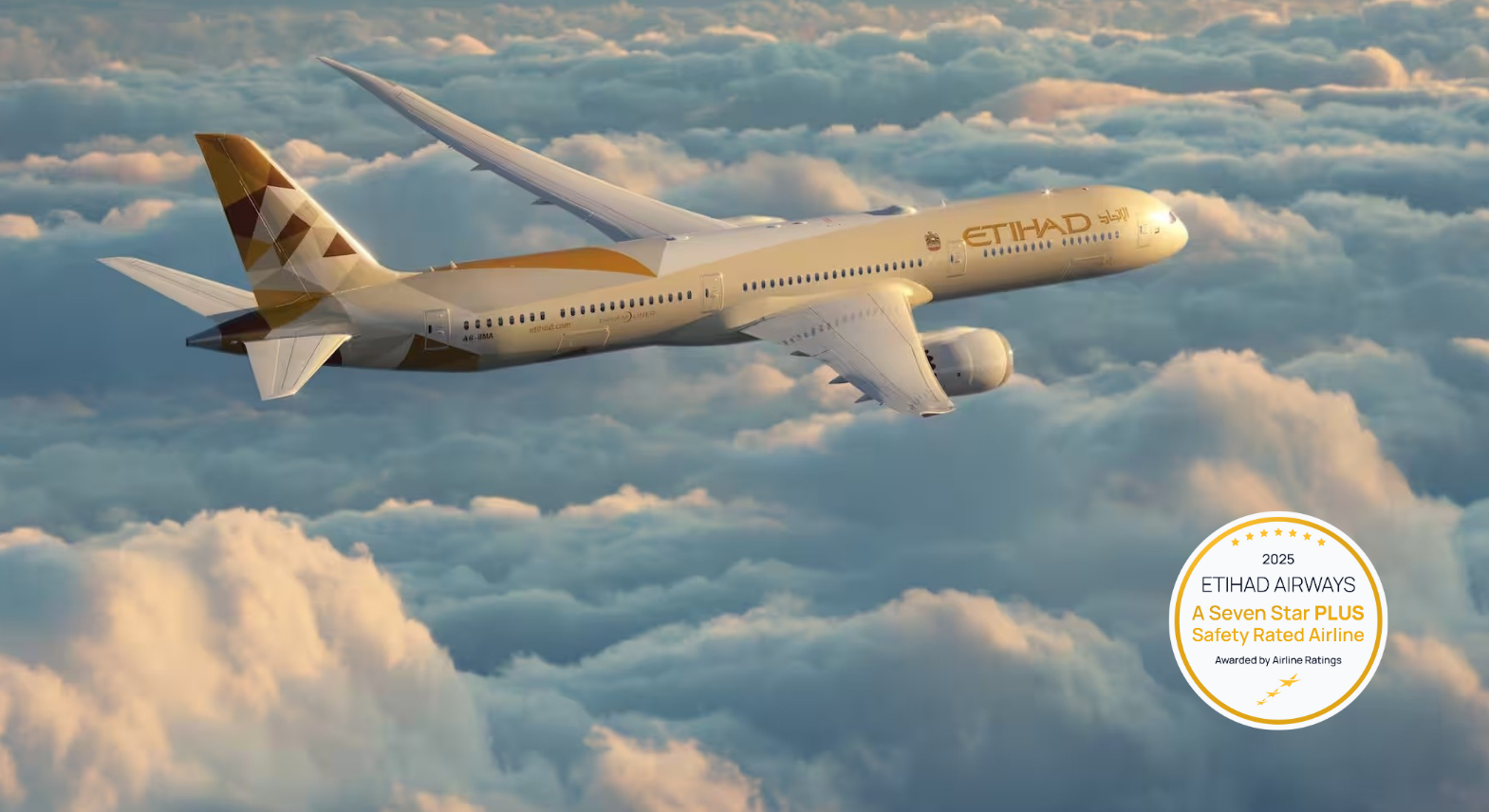
By Andreas Spaeth
Published Tue Nov 05 2024
Steven Udvar-Házy, the “godfather of aircraft leasing”, who invented this multi-billion-dollar business talks to AirlineRatings.com about Boeing’s next steps and how leasing has helped the industry. This is Part 1 with Part 2 to be published later this week.
It seems Boeing is not in a good position right now to do anything new, how did that happen?
Boeing made strategic decisions not to invest in new programs but to increase shareholder stock price. I blame the board of Boeing for being too cautious. It’s the kind of company where they bet the farm on the 747 when it first came out in 1969, they also bet the farm on the 737. Only when they made bold steps did Boeing succeed. Trying to catch up with Airbus is not a good strategy. You want to be a leader - you don’t want to be a follower. The financial drain on Boeing currently will impact their ability to invest in a new future generation of airliner. It sets them back another five years. It’s really a tragic situation for one of America’s great companies which was historically the largest exporter in the United States. With all the problems they have in other sectors from space to building new Air Force Ones, it seems like almost anything they touch has turned to poison. And I hope that they can recover. Because we need two very successful, strong aircraft suppliers, we can’t have a monopoly situation.
Overall, Boeing is only a shadow of its former self, how did it come to this?
Boeing missed the boat when Airbus announced the A320neo, Boeing initially underestimated the popularity of the A320neo family. Compare the A321neo to the 737 MAX 10, which is now like four and a half years behind. The A321neo is totally run away, outselling the MAX 10 probably seven or eight to one. And the FAA has still not come up with a finished schedule for certification of the MAX 10.
You are one of the biggest customers of Airbus and Boeing. What do you find is missing in the current industry offering?
I think it’s between the A321 and the Boeing 787-8, which is not really in production anymore. It’s the size between 220 and 280 seats, there is a gap. I say this because more and more airports will have slot restrictions, so the only way to increase your capacity is to have more seats per departure. This is what Boeing was working on 15 years ago with the New Midsize Airplane (NMA). They got quite far with that development, there were still some engine configuration issues, but then they stopped the project and brought out the MAX instead. Now the cost of developing a new plane will be twice what it was 15 years ago and the regulators don’t trust Boeing as much now as they did then. So, the time to get a new plane certified will take a lot longer.
What is the most likely aircraft that will ultimately emerge, and how close are we?
It will probably be a large single-aisle or maybe a mini twin-aisle. But this is not a good time to launch a new narrowbody, we are not pushing it at the moment, they have to get their house in order. The A320 family is now almost 35 years old, and the 737-200 was certified in December 1968, that’s a 56-year-old design. So it is time for some new stuff, but nobody has the courage or the money to do it. The technology is probably available, but the economics of that new technology is not favourable for the airlines. The maintenance costs now outweigh the fuel savings, that’s not a good equation. Our customers rather want to stabilize their existing new technology aircraft like Boeing’s 737MAXs/787s or Airbus’s A350s/A320neos, they want to see those things running reliably.
Currently, aircraft manufacturers and suppliers are under a huge strain and slipping delivery dates are the norm rather than an exception…
Tell me about it. Since 2017, we have not received a single Airbus single-aisle aircraft, A220 or A320 family, on the contracted month of delivery. Every one of 250 deliveries was late. From Boeing we had eleven aircraft scheduled for delivery from September until year-end, mainly 737s and 787s, and I don’t know if we get any of them until Boeing’s strike and its aftermath are settled. You don’t just turn a switch and it’s back on, it will take several weeks to return to some of normality. This is a tragic situation just at a time when airlines need more new aircraft. The strike couldn’t have come at a worse time. (Ed: The strike is now over)

How can the leasing business help an airline that needs aircraft now, despite all shortages and delivery delays?
When you go to Airbus or Boeing today wanting to order 787s, 777Xs, or A350-900 or A350-1000s, you are looking at five to six years minimum waiting time. With a new interior configuration, it could even be longer. We do have delivery availability before then, not very many are left. But we can also provide a bridge interim lease. Which could be an A330-200 or -300 or a 777-300ER as a bridge lease for three or four years, until delivery of our first new A350s or 787s. Which will still be before Airbus or Boeing can deliver. We can come up with solutions like using some young, used aircraft blended in with new aircraft deliveries. And we do that as well on the single aisles, where we can use A320ceos or A321ceos that are coming off lease as a bridge lease until 2026 or 2027 when we can deliver a new A321neoLR or XLR. We can also purchase some of their older aircraft as a trade-on to give them some liquidity so they can make down payments to us or also to Boeing or Airbus. We see a lot of leases being extended as the airlines can’t get enough new aircraft in. Mid-life values of aircraft are therefore strong. Historically, about 50% to 60% of leases got extended, now it’s 90%.
How will the global airliner fleet grow in the foreseeable future and how can leasing companies help airlines keep track of growth?
While in 2024 we have a global commercial jet aircraft fleet of 24,466 aircraft, by 2030 we expect that to rise to 31,000 jets, only six years from now, to carry the current six billion passengers forecast. With this we calculate that Boeing and Airbus can only deliver 85% of what they have in backlog today, because we see that neither can meet its production targets. In 1980, 2.4% of all commercial jet aircraft were leased, by 1990 it was 17%, in 2000 it climbed to 27%, in 2010 to 40% and in 2023 we hit 51.3% of all aircraft being rented. I don’t think such growth will continue at this rate, it will start stabilizing. But remember we have access to much lower-cost financing, and we buy hundreds of aircraft from Boeing and Airbus. If you are an airline needing five or ten aircraft, you won’t be able to get the pricing that Air Lease is able to negotiate buying large quantities as a long-term customer. The combination of lower capital cost and lower aircraft acquisition cost makes us an attractive alternative for airlines to lease our products rather than just purchase them.
BIO
Steven Udvar-Házy, the “godfather of aircraft leasing”
Born in Hungary in 1946, Steven Udvar-Házy’s family moved to the US in 1958, fleeing Soviet occupation. In his 20s and having studied in Los Angeles, he realized the potential of the aircraft leasing business during the outgoing piston-engine era. With a fellow Hungarian and his son, he founded International Lease Finance Corporation (ILFC) in 1973, leasing a single Douglas DC-8 to Aeroméxico, the company later became the world’s largest aircraft lessor by value. He left ILFC in 2010 and founded Air Lease Corporation (ALC), whose Executive Chairman he is. In 1999, Udvar-Házy donated US$65 million to the Smithsonian Institution, enabling them to build the annex of the Smithsonian National Air and Space Museum near Dulles International Airport in Virginia just outside Washington DC. It is called Steven F. Udvar-Hazy Center and opened in 2003, displaying original aircraft from the Boeing 707 prototype to Concorde. Forbes magazine estimated his net worth in 2021 at US$4 billion. Andreas Spaeth met Udvar-Házy at the recent APG World Connect conference in Malta.
Have questions or want to share your thoughts?
Get In Touch





